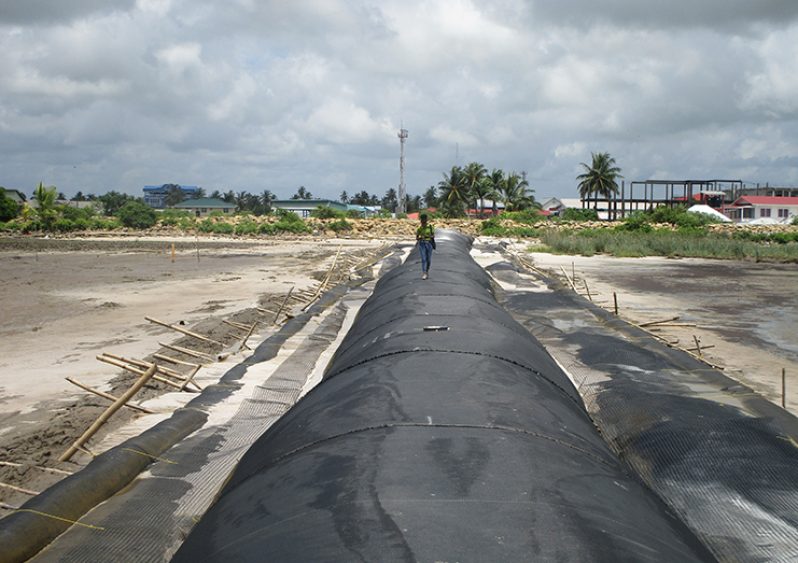THE sea defence along Anna Regina foreshore has been further strengthened by 200 metres of geotextile tube groyne, thanks to the National Agricultural Research and Extension Institute (NAREI)’s Mangrove Restoration and Management Department.
Construction works commenced in August 2019 and were completed in August 2020. The contract, valuing $31.5M, was executed by Ideal Engineering Services. The contractor was tasked with constructing four 50m Geotextile Tubes and four 52m Geotextile scour aprons at the foreshore to form two one 100m groynes.
The orientation of the groynes is 90 degrees to the foreshore. The foundation of the structures consists of bamboo, coupled with a sand base then the application and geogrid material and scour aprons. The groynes have a crest height of 3.5ft on a foreshore with an elevation of +16.76m (GD).
The installation of geotextile tubes in the form of groynes is one of the technologies in addition to mangrove seedling plantation being used by NAREI to restore the mangrove ecosystem and increase the resilience of the community against storm surges and rising sea levels.
The geotextile tube groynes are positioned along the southern extent of the site and are intended to primarily act as a groyne field to capture and hold sediments transported in the southerly direction (predominant direction of sediment transport for the project site). The structures will block sediments from entering the sluice channel to the north.
Over time, this will lead to sediment accumulation and increase the foreshore bed elevations. Due to the site geometry, the structure will also function as a breakwater and cause wave dissipation during high water, further promoting sedimentation behind the structure.
According to Kene Moseley, Project Coordinator, “NAREI has implemented a number of interventions along the Essequibo Coast. These included the introduction of mangrove seedlings, spartina grass and coastal structures. These projects have resulted in significant restoration of the mangroves along the Essequibo Coast; the restoration of this stretch of foreshore will facilitate a continuous mangrove forest between Devonshire Castle and Adventure.”




.png)









